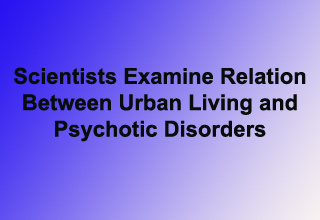
Scientists examined around 2,03,829 individuals who lived in Sweden. This was mainly done to evaluate whether individual, school or area characteristics are linked with psychosis and may have the ability to highlight the connection with urbanicity. The data for analysis was at the individual, school, municipality and county levels.
“There is a substantial worldwide variation in incidence rates of schizophrenia,” the authors commented. “The clearest geographic pattern within this distribution of rates is that urban areas have a higher incidence of schizophrenia than rural areas.”
The findings reveal that the risk of non-affective psychosis was greater in cities and towns as compared to rural areas. Among 2,03,829 individuals who were enlisted for the study, 328 were ever admitted with a diagnosis of schizophrenia.
The authors remarked, “Being raised in more urbanized areas was associated with an increased risk of developing any nonaffective psychotic disorder.” Additionally, “this association was explained primarily by area characteristics rather than by characteristics of the individuals themselves. Social fragmentation was the most important area characteristic that explained the increased risk of psychosis in individuals brought up in cities.”
In addition, 741 with other non-affective psychoses, 355 with affective psychoses and 953 with other psychoses were identified. Experts also shared that all differences in the risk of non-affective psychosis was elucidated at the individual-level as compared to the higher-level variation.
The authors further added, “Our findings highlight the concern that physical integration alone is not sufficient but that some of the positive characteristics traditionally conferred by segregation, such as a localized sense of safety, cohesion and community spirit, must also be maintained to enhance the mental health of individuals within the population.”
The apparent link between urbanicity and non-affective psychosis was explained by higher-level characteristics, primarily school-level social fragmentation. Experts evaluated cross-level markers of ethnicity, social fragmentation and deprivation on risk of developing any psychotic disorder with the help of qualitative patterns of interaction.
These findings will be published in the September issue of Archives of General Psychiatry.
